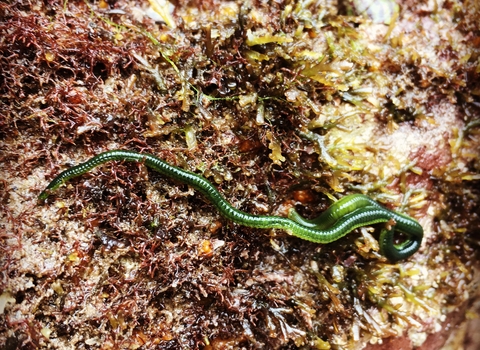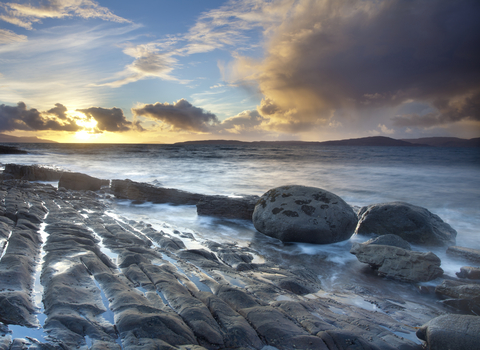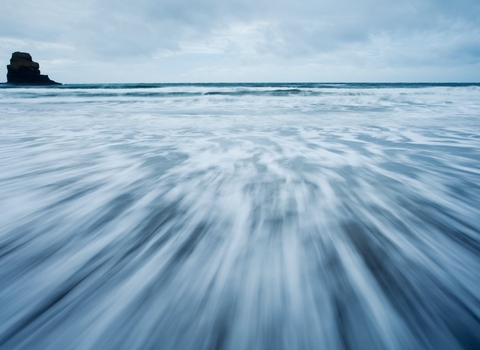
Green leaf worm by Coral Smith
Green-leaf worm
This vibrant green worm is arguably the most attractive worm found on the rocky shore!
Scientific name
Eulalia clavigeraWhen to see
April to OctoberSpecies information
About
The green-leaf worm is often seen crawling around under rocks at low tide and in and out of crevices and kelp holdfasts. And, sometimes, in and amongst mussel beds.They are thought to reproduce in July and August and their egg masses appear like little green balls of fairly liquid attached to seaweed.
How to identify
This unmistakable bright green worm grows up to 15cm long and 2.5cm wide (though usually much thinner). Its body is divided up into 200 small segments. If you can get close enough to examine the head with a magnifying glass or hand lens, then you might notice 2 large red eyes with 2 pairs of short antennae and a single antenna in front of the eyes.Distribution
Found around all British and Irish coastsDid you know?
Marine worms act as an important food source for many fish and wading birds and are therefore referred to as keystone species!How people can help
Always follow the Seashore Code when rockpooling, taking care where you walk and making sure you put animals and rocks back gently.
The Wildlife Trusts are working with sea users, scientists, politicians and local people towards a vision of 'Living Seas', where marine wildlife thrives. Do your bit for our Living Seas by supporting your local Wildlife Trust or reducing your use of one use plastics!


